Description
Product Info
Pharmacoll® Cushion is a gelatin free hydrocolloid adhesive wound dressing laminated to a waterproof thick
cross-linked polyethylene foam film backing .
Pharmacoll® Cushion forms a gel upon absorbing wound exudates providing a moist wound environment,
supporting granulation and epithelialization. Gel formation prevents Pharmacoll® Cushion from adhering to
wounds and dressing can be removed without causing pain and without damaging the granulation and
epithelial tissue. while the polyethylene foam backing work as a cushioning decreasing the pressure and
friction on the injured area which help to relief the pain .
• Adhere to both dry and moist skin surfaces.
• Deliver gentle and secure adhesion that does not irritate the skin.
• Have fluid absorption capacity that is adjustable based on adhesive formula.
• Provide barrier properties to external contaminants with secure adhesion to skin.
• Are flexible and conformable and mold to difficult anatomical contours.
1- light to moderately exudating wounds second degree burns.
2- leg ulcers.
3- pressure ulcers.
4-chronic slow healing wounds and abrasions, skin cut.
5- Used also for blisters treatment –corns –callus.
6- donor site and post-operative surgical wounds.
- Don’t use on patient with known sensitivity to the product or any of its components specially Polyisobutenes and Carboxymethylcellulose.
- Pharmacoll® Cushion should not be used on third degree burns, on exposed muscle, bones and
tendons, nor on infected wounds.
1- Discoloration and bulging of the dressing indicate it should be changed
2- Wounds showing clinical signs of infection (temperature, pus, inflammatory signs) should be treated
under medical control before resume using of the dressing
1. The dressing should remain in place as long as possible.
2. If leaks are detected, the dressing should be changed immediately.
3. Change the dressing when maximum absorption has been reached.
When the Pharmacoll® dressing comes into contact with wound exudates, the hydrocolloid swells and forms a gel that covers the wound and maintains moisture. This gel continues absorbing the wound fluid and minimizes adherence to the wound. When the dressing is changed, the wound stays protected by a film of gel.
- Clean wound area.
- Evaluate the wound and select the dressing size to allow 2.5 cm (1 inch) of the hydrocolloid adhesive to extend beyond the wound edge.
- Open the pouch and handle the dressing using gloves/forceps.
- Remove the release liner from the dressing.
- Center the dressing over the wound and the periwound area, then gently press the adhesive side of the dressing.
- Care should be taken to avoid unnecessary stretching of the dressing, which can result in mechanical trauma to the wound and surrounding skin.
- Remove the dressing frame, starting at the top and working downward. Reinforce and smooth the film border from the center outward. Continue down one side ending at the notch. Repeat process from other side until all sections of the frame are removed. “In case of Pharmacoll® Comfort and Pharmacoll® Comfort Plus “.
Dressing Removal:
- Carefully lift the dressing edges (or film border) while pressing down on the skin
- Continue lifting the edges until all are free from the skin surface.
- Press down on skin to separate dressing from skin.
- Gently remove the dressing then folding it over itself with Pulling carefully in the direction of hair growth.
- Alternatively, stretching the dressing horizontally and lifting it will also facilitate removal in most situations.
- Discard the dressing into appropriate recycle bin.
How often to change the dressing:
- The dressing should remain in place as long as possible.
- If leaks are detected, the dressing should be changed immediately.
- Change the dressing when maximum absorption has been reached.



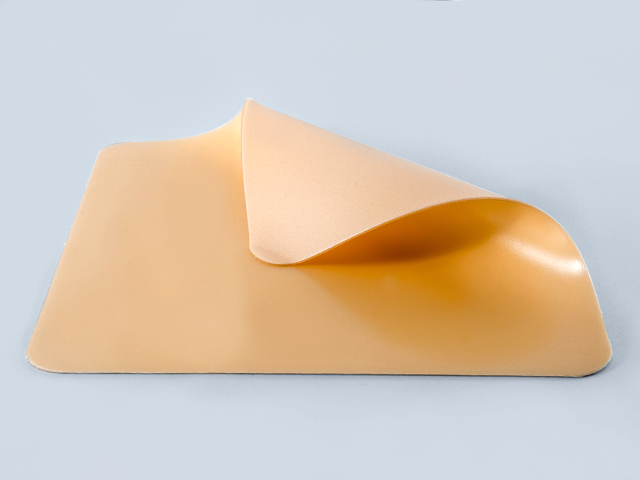
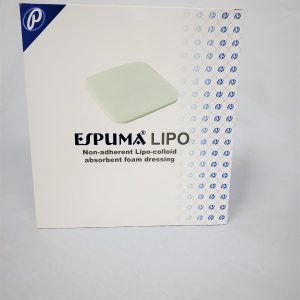
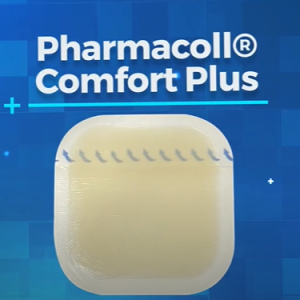
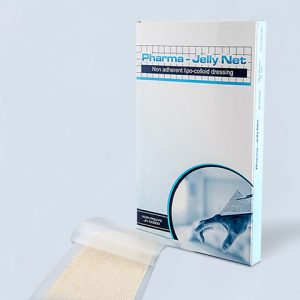
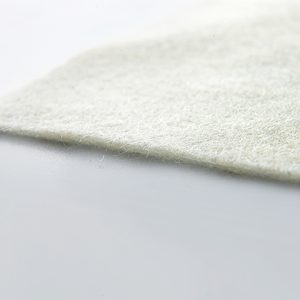
Reviews
There are no reviews yet.